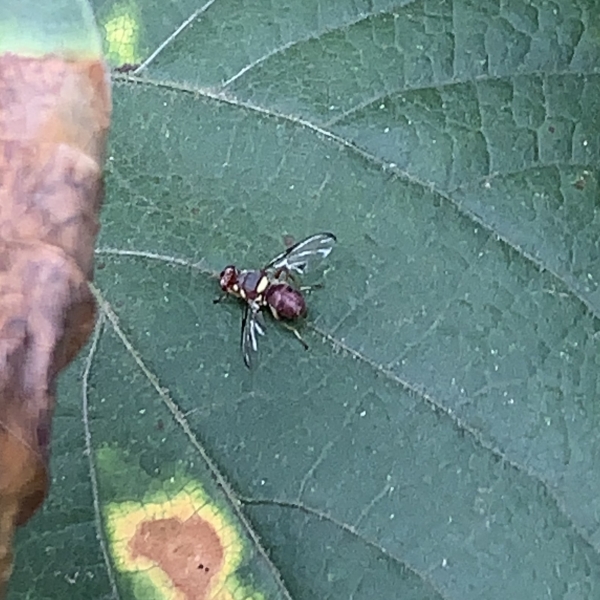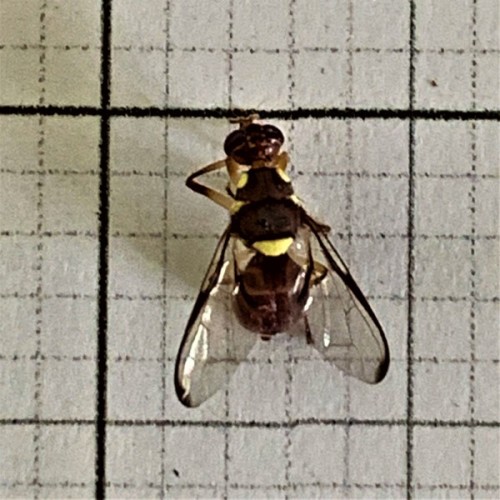Pumpkin Fly

Dacus ciliatus
Pumpkin fly, Dacus ciliatus, is a persistent pest of cucurbits in South Africa, with a particular appetite for pumpkins, marrows, and squashes, however they will attack a very wide range of vegetables and not only pumpkins.. These small, fruit fly relatives are most active during the warm months when females pierce the developing fruit to lay eggs beneath the surface. The resulting larvae tunnel through the flesh, causing premature fruit rot, discolouration, and in many cases, complete crop loss. Unlike standard fruit flies, pumpkin flies often target the fruit at ground level, making early detection difficult and infestations sudden and severe.
Effective control depends on prevention and early intervention. Chemical sprays are largely ineffective once eggs have been laid or larvae begin feeding inside the fruit. The key to success lies in reducing the adult population, especially females, before they lay eggs. Preventative baiting using protein-based lures offers a powerful residue-free method for targeting egg-laying females, making this approach more reliable and sustainable than post-infestation sprays. However if traps are set out too late, control becomes a lot more difficult.
Gardeners should start monitoring early in the season, ideally at flowering, by placing baited traps with the bottom entrance at the same height or just below the leaf canopy. Because female pumpkin flies are attracted to protein rather than pheromones, the bait type and trap height are critical to success. Combine this with strict field sanitation by removing infested fruit and maintaining a clean planting area. For extra protection, use exclusion netting during early fruit development.
-
Traps/Monitoring
-
Pumpkin Fly : Trap System
A complete trap system using the Moskisan trap and a protein-based BioLure sachet. Targets egg-laying females. Hang 30 to 40 cm above ground in direct sun. Effective for 6 weeks per sachet. -
BioLure for Pumpkin Fly
Protein bait sachets used with the trap system. Designed to attract females actively laying eggs. Store refrigerated. Once opened, must be used within the season.
-
BioLure for Pumpkin Fly
Finally we have a solution for Pumpkin Fly!This is a bait lure specifically for fruit fly and it has..
R187.67
Moskisan Trap : Trap Only
The Moskisan Trap is used around the world to monitor fruit flies in area wide monitoring programs..
R129.26
Pumpkin Fly : Trap System
Finally we have a solution for Pumpkin Fly!This is a bait lure specifically for fruit fly and it has..
R298.07



